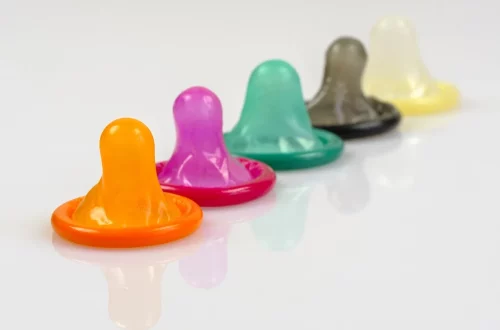
Understanding At Home Pet Euthanasia Cost: What to Expect
The decision to consider euthanasia for a beloved pet is never easy. Many pet owners face this challenging choice when their furry companions are suffering from terminal illnesses or severe pain that cannot be alleviated. The emotional weight of this decision can be compounded by practical considerations, including the associated costs. Understanding these financial aspects is crucial for pet owners who want to make informed choices while navigating their pet’s final moments.
Pet euthanasia can be a compassionate decision, allowing pets to pass away peacefully in a familiar environment, surrounded by their loved ones. At-home euthanasia provides a sense of comfort and dignity to both pets and their owners, but it can also raise questions about expenses. The costs can vary significantly depending on various factors, such as the location, the veterinarian’s experience, and the specific services included in the procedure. Knowing what to expect can help pet owners prepare emotionally and financially for this heart-wrenching journey.
As you navigate this sensitive topic, it’s essential to gather information that can guide you through the process while ensuring your pet’s comfort and dignity remain a priority. Understanding the factors that influence at-home pet euthanasia costs will help you make informed decisions during this difficult time.
Factors Influencing At-Home Euthanasia Costs
When considering at-home pet euthanasia, several factors can influence the overall cost. These include the veterinarian’s fees, travel expenses, and any additional services or products that might be required.
Firstly, the veterinarian’s expertise and experience can significantly affect the cost. Highly experienced veterinarians who specialize in end-of-life care may charge more for their services due to their advanced training and skills. It’s essential to consider this aspect when selecting a veterinarian for the procedure, as their experience can impact the quality of care provided to both you and your pet.
Location plays a crucial role in determining costs, as urban areas often have higher service fees compared to rural regions. If you live in a metropolitan area, you might expect to pay more for at-home euthanasia due to increased demand for veterinary services. Additionally, travel expenses can vary depending on how far the veterinarian must travel to reach your home. Some veterinarians may charge a flat travel fee, while others may calculate costs based on distance.
Another factor to consider is the type of euthanasia service you choose. Some veterinarians offer basic euthanasia services, while others may provide more comprehensive packages that include cremation, burial, or memorial services. These additional services can significantly impact the overall cost. For instance, if you wish to have your pet cremated after the procedure, you should inquire about the different options available, as prices can vary based on whether you choose individual or communal cremation.
Finally, it’s essential to discuss payment options with your veterinarian, as some may offer flexible payment plans or accept pet insurance. Being informed about all these factors can help you estimate the potential costs associated with at-home euthanasia and enable you to make a choice that aligns with your financial situation.
What to Expect During the Process
Understanding what to expect during the at-home euthanasia process can help alleviate some anxiety for both you and your pet. The procedure is designed to be as peaceful and compassionate as possible, allowing your pet to pass away comfortably in their familiar environment.
Initially, the veterinarian will arrive at your home and take a moment to discuss the process with you. This is an opportunity to ask any questions you may have and to express any concerns. The veterinarian will also assess your pet’s condition and ensure that you both feel ready to proceed. This open communication is crucial, as it allows you to be involved in the decision-making process and ensures that your pet receives the most compassionate care.
Once you’re ready, the veterinarian will typically administer a sedative to help your pet relax. This step is essential, as it allows your pet to feel calm and comfortable before the final procedure. You may be allowed to hold or comfort your pet during this time, which can be reassuring for both of you.
After your pet is sedated, the veterinarian will administer the euthanasia solution, usually through an injection. This solution will cause your pet to fall asleep peacefully and will stop their heart gently. The entire process is designed to be quick and painless, allowing your pet to transition without stress or discomfort.
Following the procedure, you will have time to say your goodbyes and process the loss of your furry friend. Many veterinarians offer guidance on what to do next, including options for aftercare, such as cremation or burial. This support can be invaluable as you navigate the emotional aftermath of losing a beloved pet.
Emotional Considerations of Euthanasia
The emotional journey surrounding pet euthanasia is complex and can be fraught with feelings of guilt, sadness, and even relief. Acknowledging and understanding these emotions is essential for pet owners as they move through this challenging experience.
Guilt often arises when making the decision to euthanize a pet. Many owners question whether they are making the right choice or if they could have done more to prolong their pet’s life. It’s important to remember that euthanasia is often a compassionate act, intended to prevent further suffering and pain. Recognizing that you are prioritizing your pet’s comfort and dignity can help alleviate some of that guilt.
Sadness is another prevalent emotion during this time. The bond between a pet and their owner is profound, and losing that companionship can leave a significant void in your life. Allow yourself to grieve and express your emotions, whether through talking with friends and family, journaling, or seeking support from pet loss groups. Sharing your feelings can help you process your loss and find comfort in knowing that others have experienced similar situations.
Relief can also be a common feeling after the decision is made, especially if your pet has been suffering. This emotion can be confusing, but it’s essential to understand that feeling relief does not diminish the love you had for your pet. It reflects the compassion you showed by allowing them to pass without pain.
Ultimately, each pet owner’s emotional journey is unique, and there is no right or wrong way to feel. Seeking support, whether through friends, family, or professional counseling, can help you navigate the complex emotions associated with pet euthanasia.
In conclusion, understanding the costs and emotional considerations surrounding at-home pet euthanasia is vital for making informed decisions during a difficult time. By being informed about the various factors influencing costs and knowing what to expect during the process, you can ensure that your furry friend receives the compassionate care they deserve in their final moments.
**Disclaimer**: This article is not intended as medical advice. Please consult a veterinarian for any health-related issues or concerns regarding your pet.




